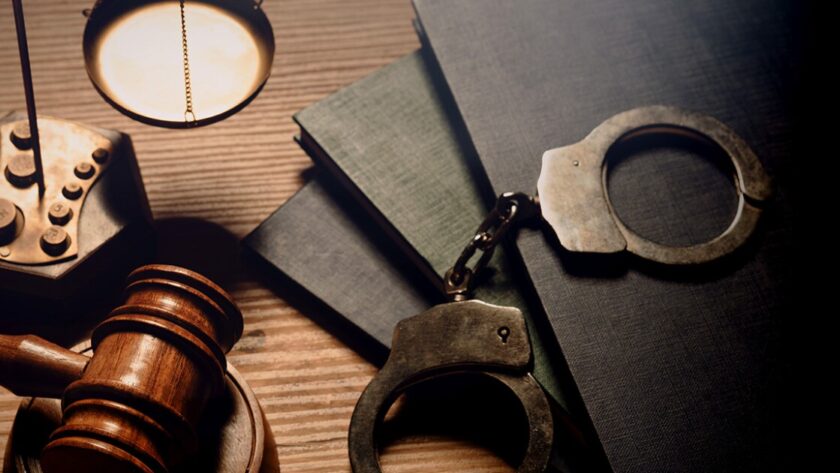Criminal law plays an integral role in society by defining what constitutes a crime, setting out the procedures for investigating and prosecuting offenders, and determining the legal consequences for those who violate the law. It is designed to maintain public order, protect citizens from harm, and ensure that individuals who commit criminal acts face appropriate consequences for their actions. The pursuit of justice in criminal law is a fundamental pillar of any legal system, ensuring fairness and the protection of the rights of both victims and accused individuals.
This article delves into the critical aspects of criminal law, including its core principles, key processes involved in the criminal justice system, the role of criminal defense attorneys and prosecutors, and the broader impact of criminal law on society.
1. What is Criminal Law?
Criminal law is a branch of law that pertains to actions or offenses considered harmful to public welfare and the safety of individuals. It outlines behaviors deemed illegal by the state and prescribes penalties for those who engage in criminal activities. These penalties can range from fines and probation to imprisonment or even the death penalty, depending on the severity of the crime committed.
Criminal law serves several purposes:
- Deterrence: To prevent individuals from engaging in criminal behavior by imposing legal consequences.
- Retribution: To ensure that offenders are punished proportionally to their crimes, maintaining a sense of justice for victims and society.
- Rehabilitation: To help offenders reintegrate into society by providing opportunities for treatment and counseling to address the causes of their criminal behavior.
- Restitution: To compensate victims for the harm done to them by the criminal.
Criminal law is distinct from civil law, which deals with disputes between individuals or organizations, such as contract breaches or personal injuries. While criminal law involves actions that are offenses against the state or society, civil law usually pertains to wrongs that affect individual rights.
2. The Criminal Justice System: An Overview
The criminal justice system is a network of institutions and processes that work together to enforce criminal laws, prosecute criminals, and ensure the proper administration of justice. The system includes law enforcement agencies, courts, and correctional institutions. The key stages in the criminal justice process are:
A. Investigation and Arrest
The criminal justice process typically begins with a crime being committed. Law enforcement agencies, such as the police, are responsible for investigating the crime, gathering evidence, and identifying potential suspects. In many cases, investigations begin when a crime is reported by a victim or witness, but law enforcement agencies also conduct investigations based on intelligence or surveillance.
Once a suspect is identified, the police may make an arrest, which involves detaining the individual on suspicion of committing the crime. Arrests must be based on probable cause, meaning there must be reasonable grounds to believe that the person has committed a crime.
B. Charging and Prosecution
After an arrest is made, the case is passed to a prosecutor or district attorney (DA), who is responsible for determining whether there is enough evidence to file formal charges. The prosecutor’s decision is critical in determining the trajectory of the case. If the prosecutor believes there is sufficient evidence, they will charge the individual with a specific crime, which may be a felony or misdemeanor, depending on the seriousness of the offense.
The charging document typically outlines the criminal offense the defendant is accused of committing. Once charged, the defendant is formally notified of the accusations against them and is granted the right to a fair trial.
C. The Role of Defense Attorneys
Criminal defense attorneys represent individuals who have been charged with a crime. Their primary role is to ensure that the defendant’s constitutional rights are protected and to advocate on their behalf throughout the legal process. A defense attorney may challenge the prosecution’s evidence, cross-examine witnesses, present alternative explanations, and negotiate plea deals when appropriate.
In the criminal justice system, defendants are presumed innocent until proven guilty, and it is the responsibility of the prosecution to prove the defendant’s guilt beyond a reasonable doubt. Defense attorneys work to ensure that their clients are given a fair trial and that the punishment, if any, is appropriate given the circumstances.
D. Trial and Verdict
If the case goes to trial, it is presented before a judge or jury, who will evaluate the evidence and make a determination of guilt or innocence. In a criminal trial, both the prosecution and the defense present their arguments, call witnesses, and submit evidence. The defense may argue that the defendant is innocent, challenge the credibility of the prosecution’s evidence, or show that the defendant acted in self-defense or lacked the mental capacity to commit the crime.
Once both sides have presented their case, the judge or jury deliberates and renders a verdict. In criminal cases, the verdict must be unanimous (in most jurisdictions) for a conviction. If the jury finds the defendant guilty, the judge will then proceed to sentencing.
E. Sentencing
If a defendant is found guilty of a crime, the judge will issue a sentence, which can vary depending on the crime’s severity, the defendant’s criminal history, and other factors. Sentences can include:
- Imprisonment: Jail or prison sentences serve as both punishment and a deterrent to prevent future crimes.
- Probation: In some cases, the court may allow the offender to serve their sentence under supervision in the community, with conditions such as regular check-ins or mandatory treatment programs.
- Fines: A financial penalty may be imposed, particularly in cases involving white-collar crime or non-violent offenses.
- Community Service: Offenders may be required to perform community service as part of their sentence.
In some cases, judges may also offer rehabilitation services to help offenders reintegrate into society. This could involve substance abuse programs, mental health counseling, or vocational training.
3. Types of Crimes and Legal Consequences
Criminal law is divided into several categories, each defining different types of crimes and the corresponding penalties. The severity of the penalty typically depends on whether the crime is classified as a felony, misdemeanor, or infraction.
A. Felonies
Felonies are the most serious criminal offenses and often result in significant penalties, including long prison sentences. Examples of felonies include:
- Murder and Manslaughter: The unlawful killing of another person, which may be classified as first-degree murder (premeditated) or manslaughter (unintentional).
- Rape and Sexual Assault: Crimes involving forced or coerced sexual acts.
- Robbery: The use of force or threats to steal property from another person.
- Drug Trafficking: The illegal manufacture, distribution, or possession of controlled substances.
Convictions for felonies can result in substantial prison time, often over a year, and in some jurisdictions, the death penalty or life imprisonment.
B. Misdemeanors
Misdemeanors are less serious crimes, typically resulting in less severe penalties, such as shorter jail sentences, fines, or probation. Common examples of misdemeanors include:
- Petty Theft: Stealing property of low value, such as shoplifting.
- Assault: The intentional infliction of harm or the threat of harm on another person, but without causing serious injury.
- DUI (Driving Under the Influence): Operating a vehicle while impaired by alcohol or drugs.
Misdemeanors generally carry sentences of up to one year in jail, community service, or probation, depending on the jurisdiction.
C. Infractions
Infractions are the least serious offenses, often resulting in fines or other minor penalties. These offenses are typically violations of local ordinances, such as:
- Traffic Violations: Speeding, running a red light, or parking violations.
- Public Disorder Offenses: Littering or disturbing the peace.
Infractions usually do not result in jail time and are resolved through fines or warnings.
4. The Importance of Criminal Law in Society
Criminal law serves several critical functions in society, ranging from protecting individuals’ rights to maintaining social order. Without criminal law, society would lack a clear set of rules to govern behavior, which could lead to chaos and lawlessness. Some of the key contributions of criminal law include:
A. Maintaining Public Order
Criminal law provides a framework for maintaining public order and ensuring that individuals act in ways that do not harm others. By setting clear boundaries for acceptable behavior and imposing legal consequences for violations, criminal law helps preserve peace and safety in communities.
B. Protecting Individual Rights
Criminal law is also a tool for protecting individual rights, such as the right to life, property, and personal safety. It ensures that individuals who are wronged by criminal actions, whether through violence, theft, or fraud, have legal avenues to seek justice.
C. Promoting Deterrence and Rehabilitation
By punishing criminal behavior, criminal law works as a deterrent to prevent future crimes. Additionally, sentencing options such as rehabilitation programs aim to reduce the likelihood that offenders will reoffend. These programs are particularly important in addressing the root causes of criminal behavior, such as substance abuse or mental illness.
D. Fostering a Sense of Justice
A well-functioning criminal justice system provides individuals with a sense of fairness and justice. It ensures that everyone is subject to the same laws, that victims of crime are protected, and that offenders face appropriate consequences for their actions.
Conclusion: Criminal Law as the Guardian of Justice
Criminal law is a cornerstone of a just society, serving both as a deterrent and a mechanism for accountability. It strives to maintain order, protect individual rights, and ensure that those who break the law are held responsible for their actions. Through its rigorous processes of investigation, trial, and sentencing, criminal law seeks to uphold justice and safeguard the principles of fairness and equity in society.
Despite the challenges of ensuring fairness and addressing the underlying causes of criminal behavior, criminal law remains essential for the proper functioning of a society that values security, justice, and respect for the rule of law.
Key Takeaways:
- Criminal Law’s Purpose: Criminal law serves to protect public safety, deter criminal behavior, punish offenders, and rehabilitate those who commit crimes.
- The Criminal Justice Process: From investigation and arrest to trial and sentencing, criminal law ensures due process and a fair trial for defendants.
- Types of Crimes: Crimes range from felonies (e.g., murder, drug trafficking) to misdemeanors (e.g., theft, DUI) and infractions (e.g., traffic violations).
- Justice and Social Order: Criminal law promotes justice, protects individual rights, and maintains public order, contributing to the safety and stability of society.




